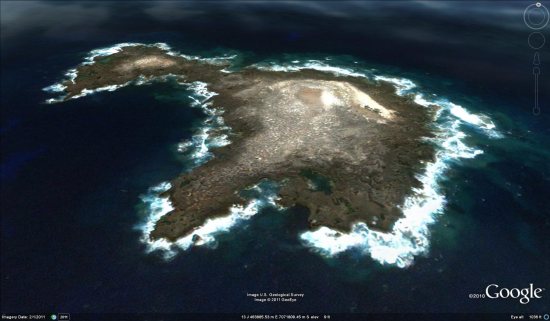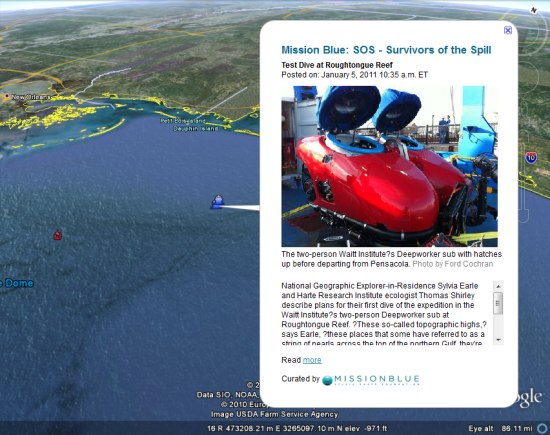While many of us would like to embark on a voyage across the ocean, we can’t all be Frank Taylor. Fortunately, Google Earth provides a great way to explore places virtually, such as with the latest installment in the “Mission Blue” series.
Last month, we showed you Mission Blue’s tracking of the gulf oil spill recovery effort. This month, they’re heading east from Easter Island to the tiny island of Salas y Gomez in an effort to do some research in the largely unexplored waters around the island.

As with the gulf spill mission, they’re providing updates in a variety of ways. You can track it by finding the blue ship icon near Easter Island (be sure the “Places” layer is turned on), by downloading this KML file![]() , or you can track them in the Google Earth Gallery
, or you can track them in the Google Earth Gallery![]() using the Google Earth Plug-in.
using the Google Earth Plug-in.
Salas y Gomez was updated in the most recent imagery update, featuring imagery that is just a few weeks old. It’s a bit fuzzy, but it’s much better than what they used to have there. To check out the island for yourself, you can fly there using
this KML file![]() .
.
For more, check out the full entry on the LatLong Blog or read stories from the crew on the Mission Blue News Watch blog.
